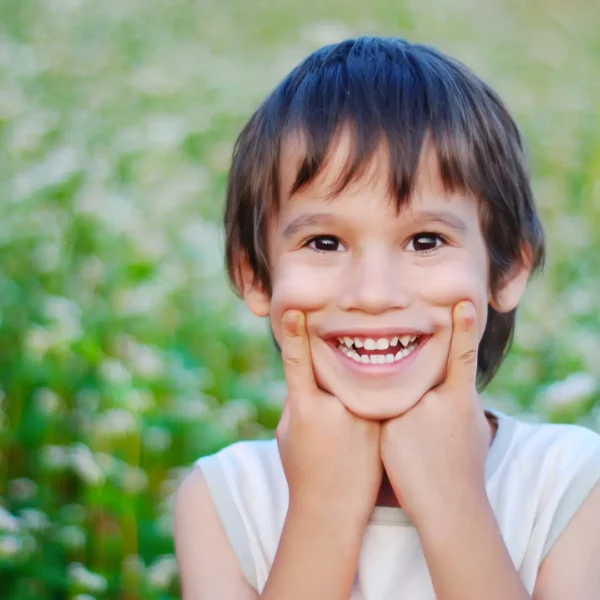
When I’m working with families, one of the things I often say is this:
You wouldn’t ask your child to stop being happy… So why would you ask them to stop being sad, or mad?
Every time I say it, I see one of two reactions.
Some parents pause and nod. “Oh… I get it.” Others say, “But I don’t want them to be sad or mad! I just want them to feel better!”
I get it. Truly, I do. Wanting your child to be happy is part of loving them. Seeing them hurt or angry can feel unbearable. But when we rush to make all challenging feelings go away, we accidentally send a different message:
That some feelings are acceptable, and others… are not.
Why Do We Label Emotions as “Good” or “Bad”?
It starts early. Happiness, excitement, joy – those emotions feel good.
Anger, sadness, fear, anxiety – those emotions feel uncomfortable, even scary.
So naturally, we start dividing them:
“Good emotions” that we want to hold on to.
“Bad emotions” that we want to get rid of as quickly as possible.
We do this with ourselves and with our children. We celebrate when they’re cheerful and playful. We get flustered, overwhelmed, and frustrated when they’re crying, yelling, sulking, or shutting down.
But what if we have been looking at emotions the wrong way? What if these categories of “good” and “bad” are outdated and no longer serve us?
Because here’s the truth: Emotions are not good or bad. They just are.
They are signals letting us know something is happening inside of us. And importantly, they naturally come and go if we let them.
All Emotions Deserve a Place at the Table
Here’s what I want every parent to know:
Your child has a right to every feeling they experience. Sadness. Anger. Worry. Excitement. Disappointment. Pride. Jealousy. Grief. Hope.
Emotions don’t need to be fixed or silenced. They need to be acknowledged, felt, and eventually, managed.
This doesn’t mean you have to let every emotion take over your house and run the show – not at all. It means the more you help your child face their emotions, understand them, and move through them, the quicker they pass on their own and the better your child gets and containing them.
And all that starts with you showing your child that their feelings are safe to feel.
The Only Way Out Is Through
When your child is upset, it’s tempting to say things like:
“Don’t cry.”
“You’re fine.”
“There’s nothing to be scared of.”
“Just calm down.”
But here is what we know:
When emotions are pushed down, they don’t disappear. They leak out in other ways – sometimes louder, sometimes later, sometimes in ways that have nothing to do with the original feeling.
What helps instead is allowing the emotion to stay, normalizing it, and letting it pass without judgment.
“You’re really disappointed. I get it. That didn’t go how you wanted.”
“You’re nervous. That makes sense. New things can feel scary at first.”
This doesn’t make the feeling stronger. It actually makes the experience safer. When something feels safe, it begins to ease.
Feel It, Then Heal It
All the skills we want our children to have – self-awareness, emotional regulation, empathy, resilience – come from first allowing them to feel. That’s the first step.
We simply cannot learn to manage something we are not allowed to feel.
Imagine a child (or an adult) who can name their feelings in the moment and understand why they’re feeling that way. Who learns that feelings pass, and they have tools to move through them. Who knows that hard feelings don’t break them, they grow from them.
These are life skills – not just for childhood, but for adulthood, relationships, school, work, and beyond. And these skills are the result of the very hard work of allowing emotions.
We don’t allow emotions just so they take over and rule everything. And we certainly don’t allow them to justify all behaviors or create chaos. Allowing emotions is not the same as permissiveness.
We allow emotions so our children can learn how to face them and ultimately manage them.
So here’s the goal: Let your child feel the full spectrum of emotions without rushing them through it.
You’re not doing your child a disservice by allowing them to feel. You’re offering them a gift.
Help Navigating Tough Feelings
If this all sounds important but still feels hard to do in the moment, I totally understand. I’ve dedicated my life to helping parents figure this out and I know how challenging it can feel.
It’s exactly why I created my parenting courses.
To give you the words to say, to guide you through the everyday moments that feel anything but simple, and to help you support your child without second-guessing yourself at every turn.
Inside the courses, you’ll find real-life tools for:
- Handling even the hardest feelings (without shutting them down)
- Building emotional regulation and true resilience that lasts
- Actionable tools for meltdowns, outbursts, tantrums, and defiance
- Setting boundaries that work while still honoring emotions
- Increasing cooperation and teamwork within your home
- Understanding your child like never before
- And so much more
Click here to explore the courses and find the support that fits your child’s age and your parenting needs.
Let’s raise emotionally healthy, connected, and confident kids, together.
 Are You Over-Parenting? How Doing Less Can Help Your Child Grow More
Are You Over-Parenting? How Doing Less Can Help Your Child Grow More Raising a Child Who Thinks, Not Just Obeys
Raising a Child Who Thinks, Not Just Obeys



